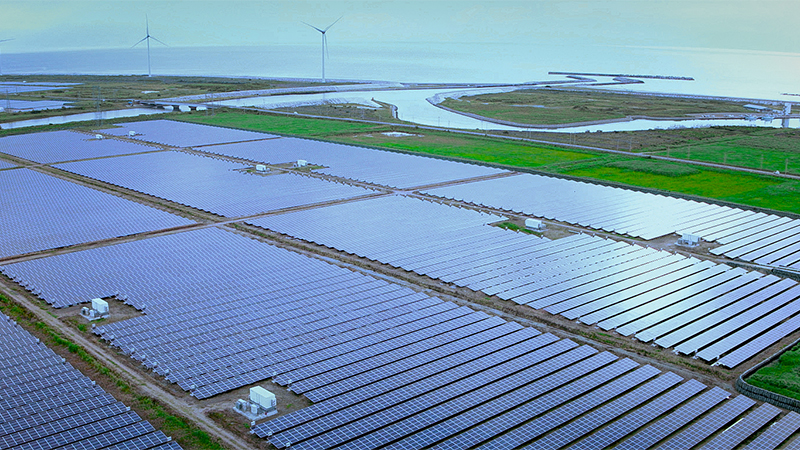Feb. 03, 2023
Memorandum concluded on green hydrogen and ammonia production in Chile—Pursuing efforts to bring about decarbonized societies in Japan and Chile—
Sumitomo Corporation has signed a Memorandum of Understanding (hereinafter, "MOU") with Colbún S.A. (hereinafter, "Colbún"), a leading Chilean power generation and energy solutions provider, on collaborating in the development of a green hydrogen and ammonia production business in Chile.

Chile's advantages in green hydrogen and ammonia production
Stretching almost 4,300 km from near the equator down to Antarctica, Chile is one of the world's most suitable regions for solar power generation in the north and wind power generation in the south. The cost of electricity accounts for a high percentage of green hydrogen and ammonia production costs, and Chile's high potential for low-cost production using renewable energy is attracting attention from around the world. In 2020 Chile announced its National Green Hydrogen Strategy, aimed at establishing the world's most competitive green hydrogen production system by 2030 and making the country one of the world's top three hydrogen exporters by 2040.
What is Colbún?
Colbún is one of Chile's leading independent power producers, with its 27 power plants of various types in Chile and Peru possessing a generating capacity of approximately 4,000 MW and accounting for about 15 percent of Chile's domestic power generation market. With a roadmap to carbon neutrality by 2050, the company is pursuing a wide range of decarbonization projects, including renewable energy, energy storage, e-mobility (*1), distributed generation, and energy efficiency improvements. By 2030, the company aims to start up new power generation projects capable of generating approximately 3,000 MW of renewable energy. The company also has outstanding expertise in the development of large-scale power generation projects that are critical to green hydrogen and ammonia production, including Latin America's one of the largest wind power projects with a capacity of 812 MW.
- e-mobility refers to the use of electric power from batteries and fuel cells to power vehicles. E.g., electric vehicles
Joint verification of green hydrogen and ammonia production/export under the MOU
This MOU aims to develop green hydrogen and ammonia production and export businesses in northern and southern Chile. Colbún is developing its business in the north through a large-scale photovoltaic power generation project and port facilities owned by Interacid Trading Chile S.A., a wholly-owned subsidiary of Sumitomo Corporation, and in the south through wind power generation.
The biggest technical and economic challenge of using renewable energy to produce green hydrogen and ammonia is ensuring stable operation of hydrogen and ammonia production facilities by controlling fluctuations in output from the power sources used. Sumitomo Corporation, together with its partner Colbún, will work to solve this issue by leveraging its expertise in business development/operation cultivated in various industries.
At the signing ceremony, Jose Ignacio Escobar, CEO of Colbún, emphasized the importance of this MOU in the strategy his company has adopted for 2030:
"We are honored to be working with Sumitomo Corporation on the development of a large-scale green hydrogen and ammonia project. This MOU is a very important step that will further solidify our growth strategy in new areas, including green hydrogen and other new energy, and will facilitate Chile's transformation into a green hydrogen and related clean energy powerhouse. Green hydrogen and ammonia are among the best options to achieve decarbonization in industrial areas where fossil fuels are used as thermal and other energy sources other than electricity (such as for boilers in factories)."
Establishment of a green hydrogen and ammonia supply chain from Chile to Japan
Prior to the signing of this MOU, Sumitomo Corporation together with other Japanese companies began a feasibility study on establishing a green hydrogen and ammonia supply chain from Chile to Japan (hereinafter, "Feasibility Study") in April 2022.
This Feasibility Study was subsidized by the Japanese Ministry of Economy, Trade and Industry as a "feasibility study on the establishment and optimization of a green fuel ammonia supply chain between Chile and Japan," and received formal support from the Chilean Ministry of Energy and other government agencies in selecting local candidate sites and accessing information on legal systems. The key feature of this project is that it is being led by the private sector while receiving recognition from the governments of both countries. Sumitomo Corporation believes that the results of this Feasibility Study will further strengthen its collaboration with Colbún.
The Sumitomo Corporation Group considers hydrogen to be one of the most important future energy sources for decarbonized societies, and it is thus engaged in developing hydrogen-related businesses from various perspectives, such as projects for locally produced and consumed hydrogen that take advantage of the characteristics of locales and of hydrogen itself, large-scale hydrogen value-chain projects that promote the mass production, transportation, storage, and utilization of hydrogen, and investments in new technologies. Sumitomo Corporation is considering and promoting various projects pertaining to ammonia as well, including the development of a competitive clean ammonia supply network, the design and development of ammonia bunkering vessels, and the establishment of a supply chain that includes the development of related infrastructure such as marine transportation and storage. Through this ongoing collaboration with Colbún and the pursuit of other hydrogen- and ammonia-related projects, the Company will continue accelerating various initiatives to realize a sustainable energy cycle and make significant contributions to building decarbonized societies and mitigating climate change.



